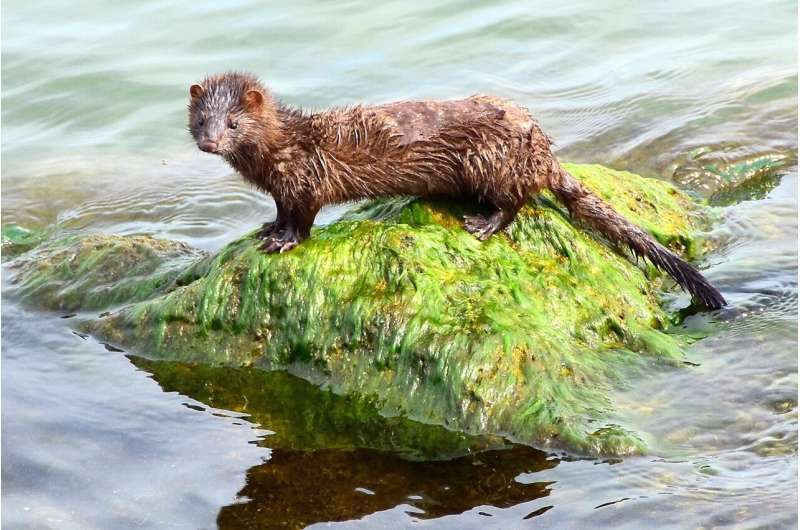Credit: Pixabay/CC0 Public Domain
The American mink Neogale vison is an invasive species in Europe introduced for fur farming in the 1920s and later established in the wild after escapes and illegal releases. As a feral species, it threatens native species and biodiversity, and poses a risk for boosting disease circulation, including mink-related strains of COVID-19. New research published in Mammal Review provides information on the presence of the species in Europe over the past 15 years.
The study, which was conducted by an international team of scientists, compiled a diverse set of data resources covering 32 nations. The work uncovers a progressive spread of the American mink in most European countries. Its range has continued to increase over the last decade, and it is now widespread in Northern and Western Europe, but data are lacking for Eastern and South-Eastern Europe.
The updated distribution data on the species may help officials develop risk assessment and risk management policies.
"The study underscores the urgent need for effective control strategies and continued monitoring of American mink populations across Europe to prevent further harm to biodiversity and potential transmission of zoonotic diseases," said corresponding author Joaquin Vicente, Ph.D., of the University of Castilla-La Mancha and Consejo Superior de Investigaciones Científicas, in Spain. "The research findings will be valuable to policymakers, conservationists, and other stakeholders working to protect European ecosystems and public health."
More information: Feral American mink (Neogale vison) continues to expand its European range: time to harmonize population monitoring and coordinate control, Mammal Review (2023). DOI: 10.1111/mam.12315
Provided by Wiley
























